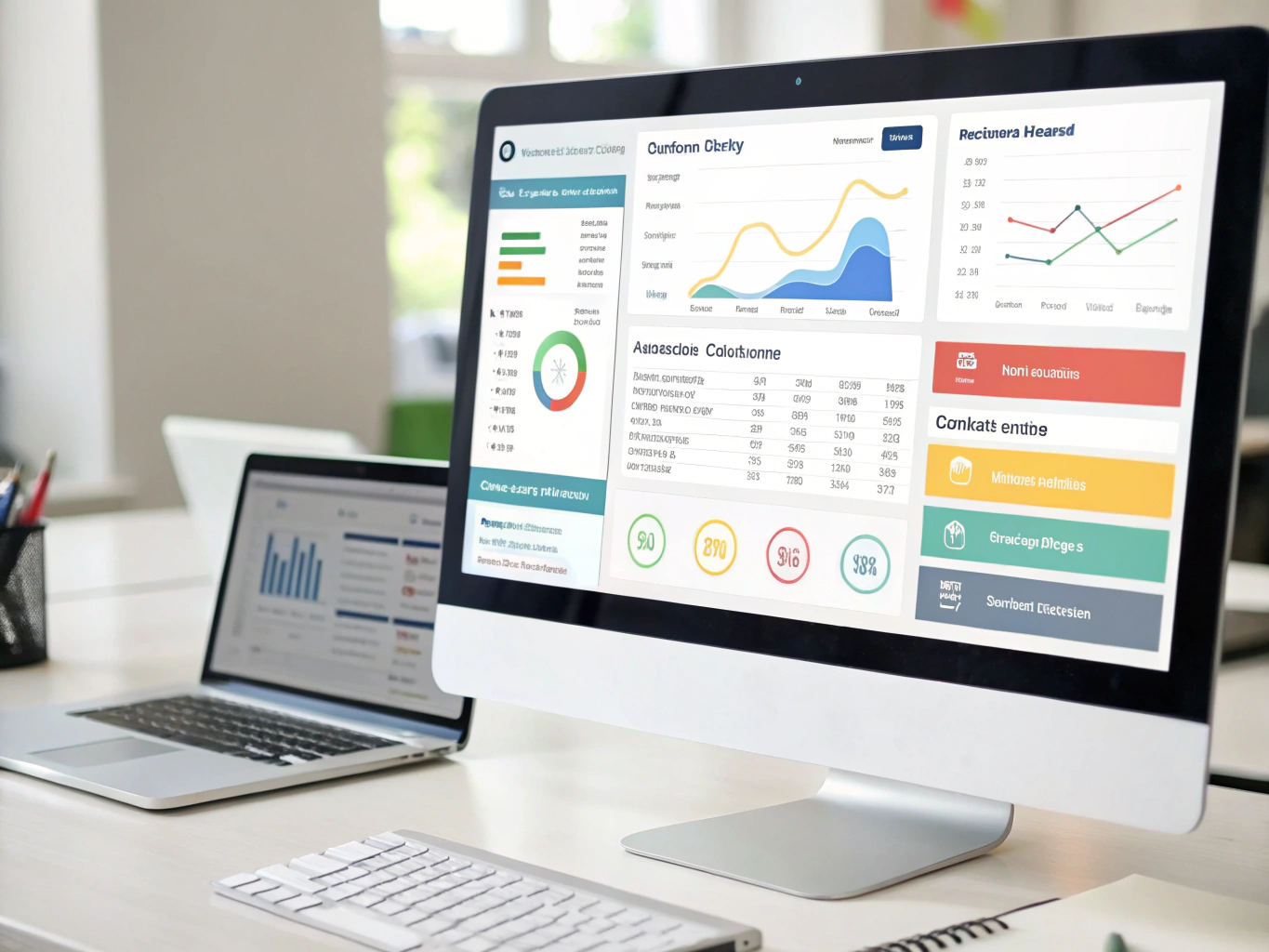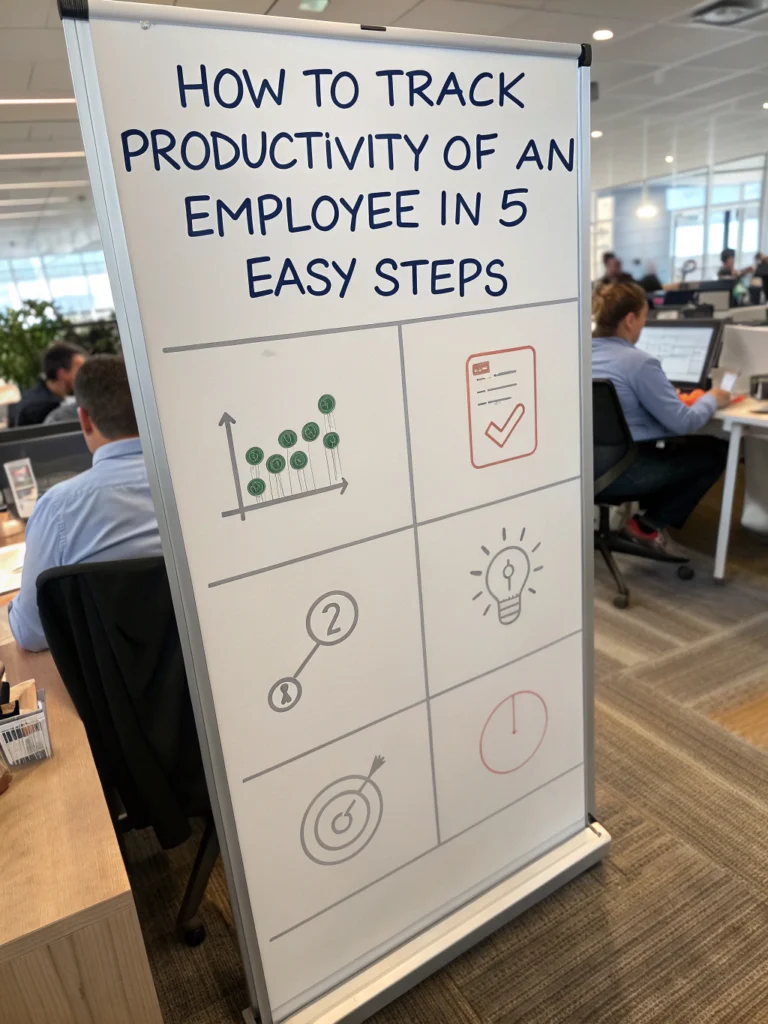How to Track Productivity of an Employee in 5 Easy Steps
Wondering how to track productivity of an employee without creating a surveillance state? You're not alone. In today's hybrid work world, understanding your team's output isn't just nice—it's necessary.
Let me walk you through 5 practical steps that actually work in real businesses. I've seen companies go from guessing about performance to having clear visibility, and I'll show you exactly how to do it.
Why Tracking Employee Productivity Matters in 2025
Before diving into the "how," let's address the "why."
Employee productivity tracking isn't about micromanaging or playing Big Brother. It's about:
- Understanding what's working (and what's not)
- Providing targeted support where needed
- Recognizing and rewarding top performers
- Making data-driven decisions about workload and resources
- Creating accountability while maintaining trust
The best teams I've worked with use productivity tracking as a tool for growth, not punishment.
Looking to supercharge your own productivity while you build these systems? Check out our >AI for Productivity eBook + Checklist: Supercharge Your Efficiency in 2169.
Step 1: Define Clear Productivity Metrics
You can't track what you haven't defined. The first step in any effective workplace productivity tracking system is establishing clear metrics.
Here's how to do it right:
- Start with your business objectives
- Break these down into team goals
- Translate team goals into individual KPIs
- Ensure metrics are measurable and realistic
- Get buy-in from employees on their metrics
Different roles need different metrics. For example:
- Sales roles: Closed deals, revenue generated, qualified leads
- Customer service: Resolution time, customer satisfaction scores, first-call resolution rate
- Development: Deployment frequency, bug fix time, feature completion
- Marketing: Campaign ROI, lead generation, conversion rates
The key is to focus on outcomes, not activities. Hours worked tells you far less than results achieved.
Step 2: Implement the Right Tools
Once metrics are defined, you need the right employee productivity tools to track them efficiently.
Top options for 2025 include:
- Project management systems like Asana, Monday.com, or ClickUp
- Time tracking software such as Toggl, Harvest, or RescueTime
- Performance dashboards like Databox or Google Data Studio
- Communication platforms with analytics (Slack, Teams)
- Industry-specific tools depending on your field
When selecting tools, consider:
- User-friendliness (if it's complicated, adoption will suffer)
- Integration capabilities with your existing tech stack
- Customization options for your specific metrics
- Reporting features that provide actionable insights
- Employee privacy concerns
Remember: The best tool is the one your team will actually use consistently.

Step 3: Establish Regular Check-ins and Reviews
Technology alone won't monitor work productivity effectively. The human element is crucial.
Implement a cadence of reviews:
- Daily quick check-ins (5-15 minutes)
- Weekly progress reviews
- Monthly performance discussions
- Quarterly goal setting and evaluation
During these sessions:
- Review the metrics objectively
- Ask open-ended questions about challenges
- Provide specific feedback on progress
- Discuss resource needs or blockers
- Celebrate wins and identify learning opportunities
These conversations transform raw data into actionable insights. They also give employees a voice in the process, which increases buy-in dramatically.
For teams managing productivity with attention challenges, our >ADHD Productivity Power Pack: Ebooks, Guides, Checklists, Workbook & Tools to Master Focus, Time Management & Organization provides specialized strategies.
Step 4: Balance Quantitative and Qualitative Tracking
Numbers tell part of the story, but not all of it. To truly how to measure employee performance, you need both quantitative and qualitative data.
Quantitative tracking includes:
- Output metrics (tasks completed, deals closed)
- Efficiency metrics (time per task, resource utilization)
- Quality metrics (error rates, customer satisfaction)
Qualitative tracking includes:
- Peer feedback
- Client testimonials
- Collaboration effectiveness
- Initiative and innovation
- Problem-solving approaches
The most effective productivity tracking combines these approaches. For example, a developer might complete tasks quickly (quantitative win) but create technical debt that causes future problems (qualitative concern).
This comprehensive approach helps avoid the common pitfall of optimizing for what's easily measured rather than what truly matters.
Step 5: Create Improvement Plans to Improve Staff Productivity 2025
Tracking productivity isn't the end goal—improving it is. The final step is using your tracking data to create targeted improvement plans.
Effective improvement plans:
- Focus on specific metrics that need attention
- Include clear, achievable milestones
- Provide necessary resources and training
- Set realistic timelines for improvement
- Include regular check-ins on progress
This step transforms productivity tracking from a measurement exercise into a growth engine. It also demonstrates to employees that the purpose of tracking is development, not criticism.
For maximum impact, connect improvement to incentives. When employees see tangible benefits from productivity gains, motivation follows naturally.
Common Pitfalls When Tracking Employee Efficiency
As you implement these steps to track employee efficiency, watch out for these common mistakes:
- Overemphasis on quantity over quality: More isn't always better, and may lead to corner-cutting
- Ignoring context: Productivity fluctuations often have legitimate causes that numbers alone won't reveal
- Inconsistent tracking: Sporadic measurement yields unreliable data
- Failure to act: Collecting data without using it for improvement wastes everyone's time
- Creating a culture of surveillance: When employees feel constantly watched rather than supported, morale and creativity suffer
The most successful productivity tracking systems are transparent, fair, and focused on growth rather than punishment.
Want to improve your own productivity habits before tackling your team's? Check out our guide on productivity planner templates to get started.
Final Thoughts on Tracking Employee Productivity
Learning how to track productivity of an employee effectively isn't about implementing sophisticated surveillance systems. It's about creating clarity around expectations, providing the right tools, maintaining human connection, balancing different types of feedback, and focusing on continuous improvement.
When done right, productivity tracking becomes a win-win—employees gain clearer direction and recognition for their contributions, while businesses optimize performance and results.
Remember that the ultimate goal isn't perfect measurement but better outcomes. Keep that focus, and your productivity tracking efforts will yield meaningful results.
FAQs About Employee Productivity Tracking
Is it legal to track employee productivity?
Yes, tracking work-related productivity metrics is generally legal, but there are important considerations. Always:
- Inform employees about tracking methods
- Focus on job-related metrics
- Comply with local privacy laws
- Avoid excessive monitoring of personal activities
- Consult legal counsel for your specific jurisdiction
How do you measure productivity for remote employees?
For remote teams, focus on:
- Output-based metrics rather than hours logged
- Project management tool usage
- Regular video check-ins
- Clear deliverables with deadlines
- Customer/client feedback
- Quality of work submissions
What's the difference between activity and productivity?
Activity measures actions taken (emails sent, hours logged, meetings attended). Productivity measures meaningful output and results. Always prioritize tracking productivity over activity.
How frequently should productivity be measured?
The optimal frequency depends on your industry and role, but generally:
- Daily for fast-moving metrics
- Weekly for project-based work
- Monthly for broader performance reviews
- Quarterly for strategic goal evaluation
Can productivity tracking hurt company culture?
Poorly implemented tracking can damage trust and morale. To avoid this:
- Be transparent about what's tracked and why
- Focus on improvement, not punishment
- Include employees in metric selection
- Recognize achievements, not just shortfalls
- Use tracking as a coaching tool, not a surveillance mechanism
With these five steps, you now have a roadmap to effectively track employee productivity while maintaining a positive, trust-based workplace culture. The key is balancing accountability with empowerment to drive real results.

